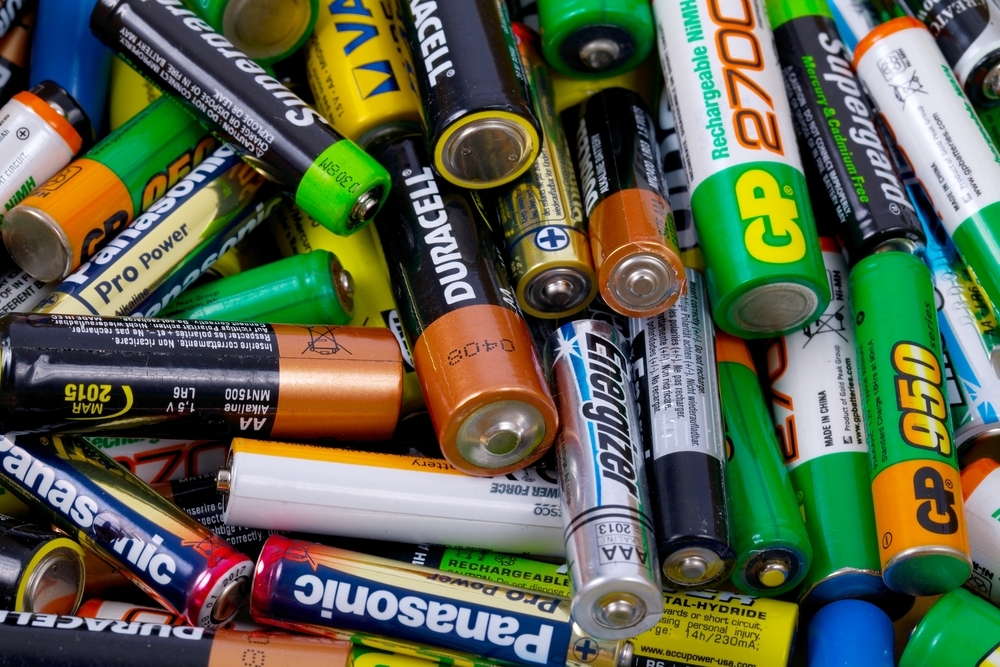Many of us have heard at least once that batteries can be alkaline or saline. What does this mean and which type of battery will last longer? Let's learn from this article.
What are Saline Batteries
The content of the article
- What are Saline Batteries
- Features of alkaline batteries
- Which is better to choose
Salt batteries are batteries that are of the “dry” type and contain a saline solution as electrolyte. Not so long ago, this type of battery could be called the world leader in terms of quality and price ratio, but over time, technologies have stepped forward and the situation has changed.
Reference. Salt batteries were invented in 1865.
A classic salt battery contains three main components: cathode, anode and electrolyte. The first two serve to generate current between themselves, and the third ensures the flow of the reaction, which leads to the appearance of voltage. The cathode in such a power cell is its shell, made of zinc, and manganese dioxide, carefully impregnated with zinc powder, is used as the anode.
Reference. Because of the "impregnation" of the anode with zinc powder, salt batteries are sometimes called "zinc-carbon".
In prototypes of modern batteries, a small amount of thickened starch ammonium chloride (now it can be found in some foods under the index E510). It was replaced with zinc chloride a little later, and some manufacturers even added the so-called calcium salt to zinc.
As we have already noted, in the process of a redox reaction, triggered by the interaction of three components, an electric current arises. This current is collected with the help of the current collectors of the device, then directed to the electrodes and only then enters the consumer device.
Reference. The faster the redox reaction takes place inside the battery, the less time it can last.
Light weight and rather low cost - these are the two main "trump cards" that salt batteries can boast of. By the way, if you do not "force" them to work constantly, but from time to time let them "lie down", the service life of each individual element will significantly increase. If we are talking about a device that must work constantly, you can purchase two sets of batteries and change them one by one after a while.
Not devoid of "salt" and disadvantages. These include a short shelf life (up to 3 years), self-discharge, unstable operation in critical temperature conditions, sometimes shell oxidation and leakage. In addition, the average capacity of about 0.8 A / h is not huge. However, for a remote control, a small flashlight or a radio receiver, this is most often enough.
Features of alkaline batteries
Thomas Edison himself, as well as the talented American scientist Voldemar Jungner, had a hand in the creation of such a battery. At the beginning of the 20th century, these two bright minds designed the first device used for autonomous transmission of current and containing an alkali. By the way, "Alkali" in English sounds like "alkaline", which makes it clear where "alkaline" has such a name.
It is worth noting that there is no major structural difference between alkaline (alkaline) and saline batteries, since the former also have electrodes and an electrolyte, thanks to which the reaction is carried out with the release of an electric current. In order for the device not to explode from an uncontrolled reaction, the design provides for called a safety diaphragm, as well as a gas chamber used to store gases arising from discharge.
Reference. This type of battery has a lot of advantages. These include a large capacity indicator, long (up to 7 years) service life, inability to self-discharge, reliable sealing housing, high specific capacity, stable operation under conditions of constant discharge, as well as resistance to drops temperatures.
Not without its drawbacks. Experts attribute to such a large mass of alkaline batteries and their price. In addition, after failure, they cannot be recharged using a special device and used again: the battery that ordered to live for a long time cannot be restored.
The largest manufacturers of alkaline batteries are Energizer, Duracell and Sony. The scope of their products is quite wide: from voice recorders, cameras and audio players to remote controls, powerful lights and alarms.
Which is better to choose
The answer to this question is unlikely to be unambiguous, and when choosing batteries, one must proceed from a number of criteria. The main thing that needs to be done in this case is to decide for what purpose the batteries will be used. If the scope of their application is limited to a TV remote control, then there is no point in overpaying for branded alkaline batteries: although they will last longer, they are unlikely to pay off. If we are talking about buying batteries, for example, for a camera, then in this case the preference is unambiguous it is better to give "alkalines", since they are not only more reliable in operation, but also much slower discharged.
When choosing a battery, you should also not forget about how this or that type copes with work in the cold. So, alkaline elements in conditions of 30-degree cold will last twice as long on average.
Subscribe to our Social Networks


